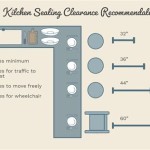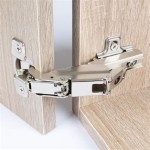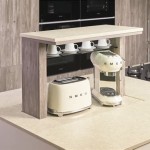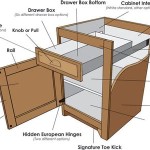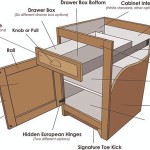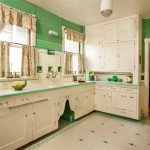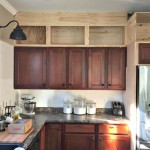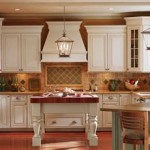Standard Width Of Lower Kitchen Cabinets
Kitchen cabinets are essential components of any kitchen, providing storage for cookware, dishes, and various other kitchen essentials. Lower cabinets, in particular, play a crucial role in organizing and storing heavier and bulkier items. When designing or remodeling a kitchen, understanding the standard width of lower cabinets is essential for maximizing space, ensuring efficient workflow, and creating a visually appealing aesthetic. This article will delve into the typical dimensions of lower kitchen cabinets, highlighting factors that influence their width, and exploring options for customizing cabinet sizes to suit specific needs.
Standard Lower Cabinet Widths
The most common width for lower kitchen cabinets is 12 inches. This standard width is often used for base cabinets, wall cabinets, and countertop cabinets. It provides a balance between functionality and visual appeal, allowing for adequate storage space without overwhelming the kitchen layout. However, it's important to note that this is not a fixed rule and can vary slightly depending on the manufacturer and cabinet style.
Other standard widths commonly found in lower kitchen cabinets include:
- 15 inches: This width is ideal for accommodating larger appliances like ovens, dishwashers, or refrigerators, offering more storage space in the cabinet below.
- 18 inches: This width is often used for corner cabinets, providing ample storage while maximizing the use of corner space.
- 24 inches: This width is suitable for creating islands or peninsula counters, offering extra storage and work space.
Factors Affecting Cabinet Width
Several factors can influence the width of lower kitchen cabinets, impacting both the functionality and aesthetics of the kitchen. These factors include:
- Kitchen Layout: The overall layout of the kitchen plays a crucial role in determining the width of cabinetry. A small kitchen might benefit from narrower cabinets to maximize available space, while a larger kitchen can accommodate wider cabinets for greater storage.
- Cabinet Style: Different cabinet styles offer varying widths. For instance, traditional cabinets may have wider doors to accommodate larger hardware, while modern cabinets often have narrower doors with minimalist designs.
- Appliance Dimensions: The dimensions of installed appliances, such as the oven or dishwasher, can influence the width of adjacent cabinets. It's essential to consider the exact measurements to ensure proper fit and functionality.
- Personal Preferences: Ultimately, the width of lower kitchen cabinets should reflect the individual's preferences and needs. If ample storage space is a priority, wider cabinets may be preferred, while smaller kitchens might opt for narrower cabinets to maintain a sense of spaciousness.
Customization Options
While standard cabinet widths offer a convenient starting point, many manufacturers offer customization options to cater to specific needs and preferences. These options allow homeowners to create a kitchen that perfectly matches their desired functionality and aesthetics.
- Adjustable Shelves and Drawers: Adjustable shelves and drawers provide flexibility in organizing and storing items of varying sizes. This feature allows for customization within the standard cabinet width, maximizing storage efficiency.
- Custom Cabinetry: For those seeking a truly personalized kitchen, custom cabinetry allows for unique dimensions and configurations. This option enables homeowners to create cabinetry that perfectly fits their specific layout and storage requirements.
- Combination of Standard and Custom Cabinets: A combination of standard and custom cabinets can be a cost-effective solution, utilizing standard cabinets for the majority of the kitchen and customizing specific areas for unique storage needs.
By understanding the standard widths of lower kitchen cabinets and considering factors influencing their dimensions, homeowners can make informed decisions about their kitchen design. Whether opting for standard cabinetry or exploring customization options, prioritizing functionality and aesthetics will ensure a kitchen that is both practical and visually appealing.

Base Cabinet Size Chart Builders Surplus

Kitchen Base Cabinet Size Chart Builders Surplus Sizes Cabinets Espresso

N Standard Kitchen Dimensions Renomart

Standard Kitchen Cabinets Google Search Cabinet Plans Base Measurements

Kitchen Cabinet Dimensions Size Guide

Abcs Of Kitchen Cabinets And Specifications Granite Quartz Countertops Factory

Cabinet Sizes Blok Designs Ltd

N Standard Kitchen Dimensions Renomart

Kitchen Wall Cabinet Size Chart Builders Surplus Cabinets Sizes Dimensions

Kitchen Cabinet Sizes What Are Standard Dimensions Of Cabinets

